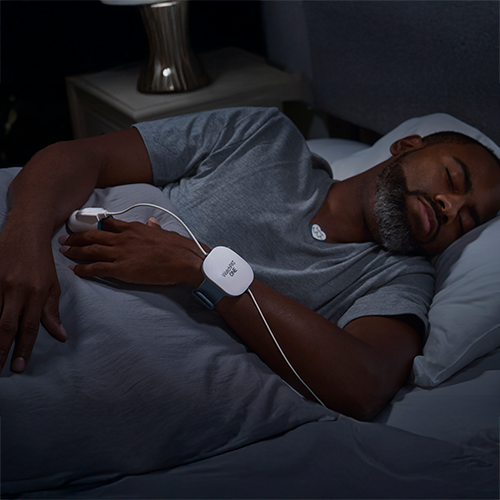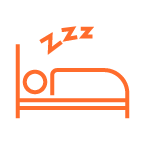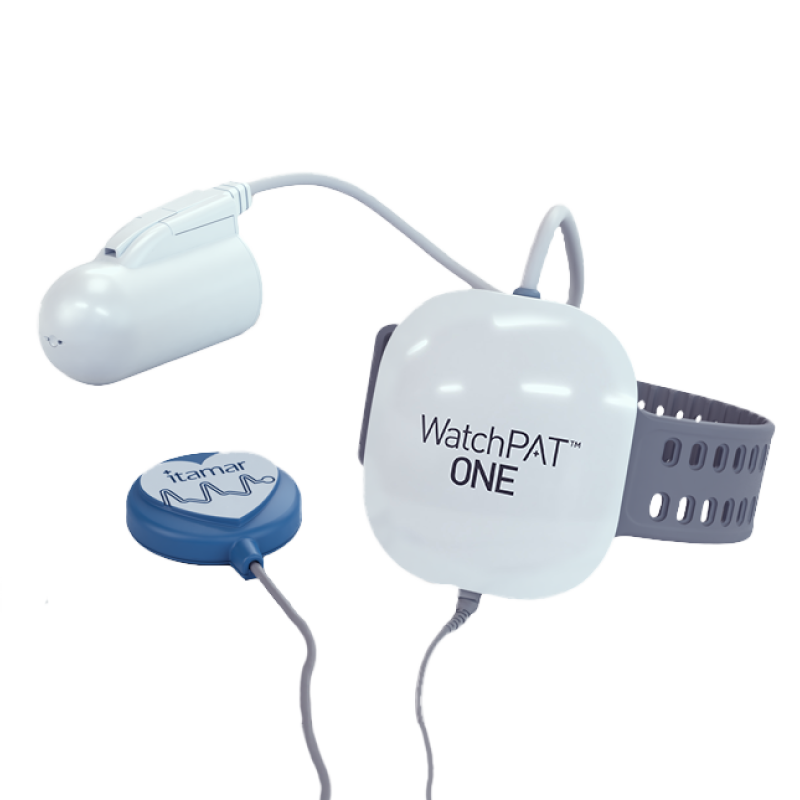Frequenty asked questions about sleep tests
If you are not satisfied with your sleep quality or if you have symptoms such as fatigue, drowsiness, snoring, lack of concentration, or a decreased ability to effectively perform everyday tasks, a sleep test might be helpful.
Also, sleep disorders are often associated with diseases such as hypertension, diabetes, and heart disease.
The device has three sensors: one goes on the chest, a second on the wrist, and the third on a finger. These sensors collect data about sleep, including pauses in breathing, snoring, blood oxygen levels, heart rate, and body positioning. They provide a quick assessment of your sleep stages.
The home test is often the preferred method for diagnosing sleep apnea, especially in people with symptoms such as daytime sleepiness, pauses in their breathing, snoring, and non-restorative sleep. The test is accessible and can be done in the comfort of your own home at your convenience.
By contrast, the laboratory sleep test, called polysomnography, provides a more comprehensive and detailed sleep analysis. Given in a controlled environment, the test can be used to diagnose sleep apnea, as well as other sleep disorders. With the help of an electroencephalogram (EEG), a test that uses sensors attached to your head, it is possible to accurately detect the different stages of sleep, evaluate its quality, and pinpoint when it is disturbed. Several other sensors can help identify what exactly disturbs your sleep, such as leg movements. You can make an appointment at one of our service points for a laboratory sleep test.
If you are not sure which test is right foryou, talk to one of our respiratory therapists.
You will have the opportunity to provide detailed information about your experience on a morning questionnaire. Our team will analyze the information and the data collected by the device. Based on this analysis, we will determine whether you need a new test without additional cost.










